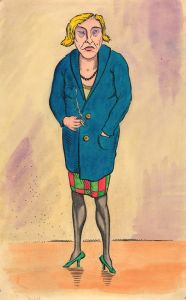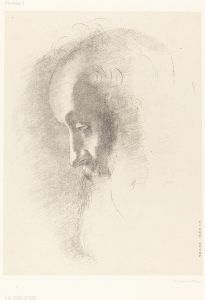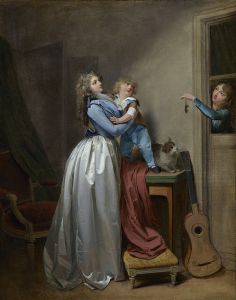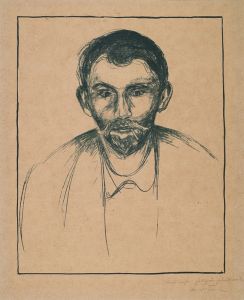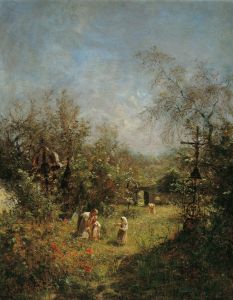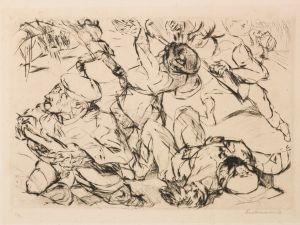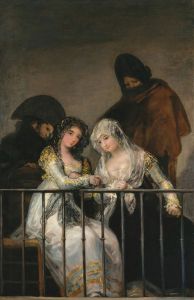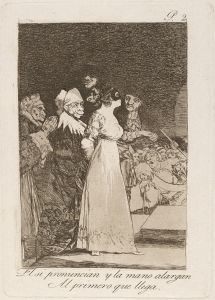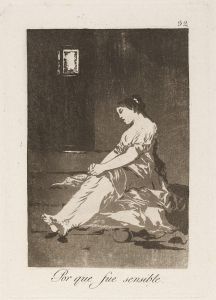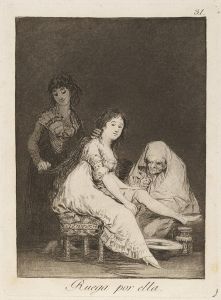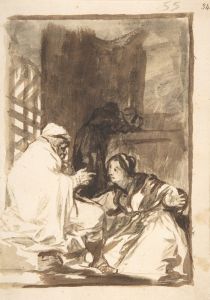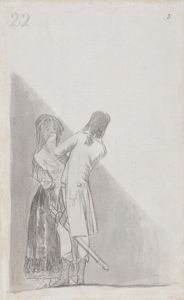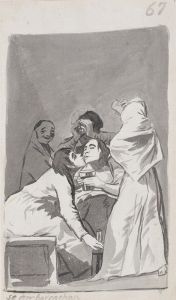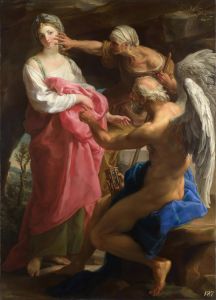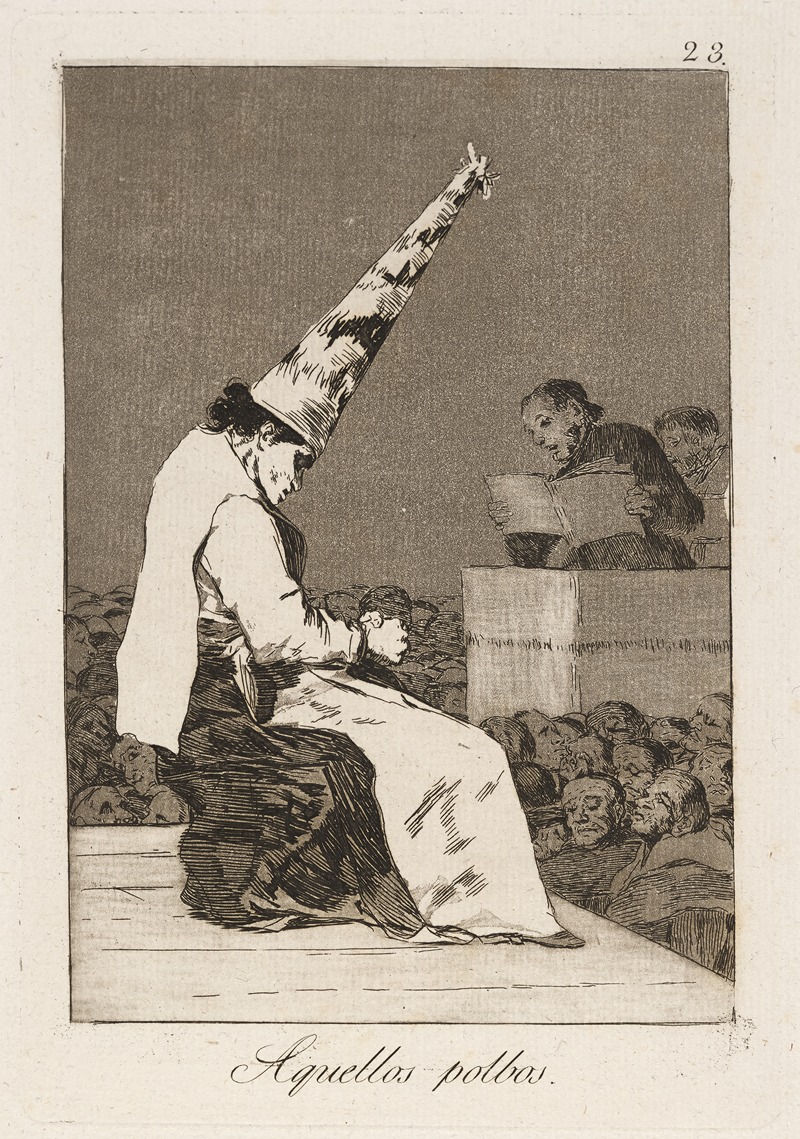
Aquellos polbos.
A hand-painted replica of Francisco de Goya’s masterpiece Aquellos polbos., meticulously crafted by professional artists to capture the true essence of the original. Each piece is created with museum-quality canvas and rare mineral pigments, carefully painted by experienced artists with delicate brushstrokes and rich, layered colors to perfectly recreate the texture of the original artwork. Unlike machine-printed reproductions, this hand-painted version brings the painting to life, infused with the artist’s emotions and skill in every stroke. Whether for personal collection or home decoration, it instantly elevates the artistic atmosphere of any space.
Francisco de Goya, a prominent Spanish painter and printmaker, is renowned for his significant contributions to the art world during the late 18th and early 19th centuries. His works often reflect the social and political upheavals of his time, characterized by a unique blend of realism and romanticism. However, there is no known painting by Goya titled "Aquellos polbos." It is possible that there might be a misunderstanding or misattribution regarding this title. Goya's extensive body of work includes famous series such as "Los Caprichos," "The Disasters of War," and "Los Disparates," as well as notable paintings like "The Third of May 1808" and "Saturn Devouring His Son."
Goya's art is often divided into periods that reflect his evolving style and thematic focus. His early works were influenced by the Rococo style, evident in his tapestry cartoons for the Royal Tapestry Factory in Madrid. As he matured as an artist, Goya's style became more personal and expressive, often delving into darker and more complex themes. This shift is particularly evident in his "Black Paintings," a series of murals he created on the walls of his home, which depict haunting and enigmatic scenes.
Throughout his career, Goya was deeply affected by the political and social changes in Spain, including the Peninsular War and the subsequent turmoil. His works often serve as a commentary on the human condition, exploring themes of violence, madness, and the folly of mankind. Goya's ability to capture the emotional and psychological depth of his subjects has earned him a lasting legacy as one of the most important figures in Western art history.
Despite the lack of specific information about a painting titled "Aquellos polbos," Goya's influence and contributions to art remain significant. His innovative techniques and willingness to confront challenging subjects paved the way for future generations of artists. Goya's work continues to be studied and admired for its technical mastery and profound insight into the human experience.
If there is a specific painting or series you are interested in learning more about, it may be helpful to verify the title or explore Goya's well-documented and celebrated works. His legacy is preserved in numerous museums and collections worldwide, where his art continues to captivate and inspire audiences.





